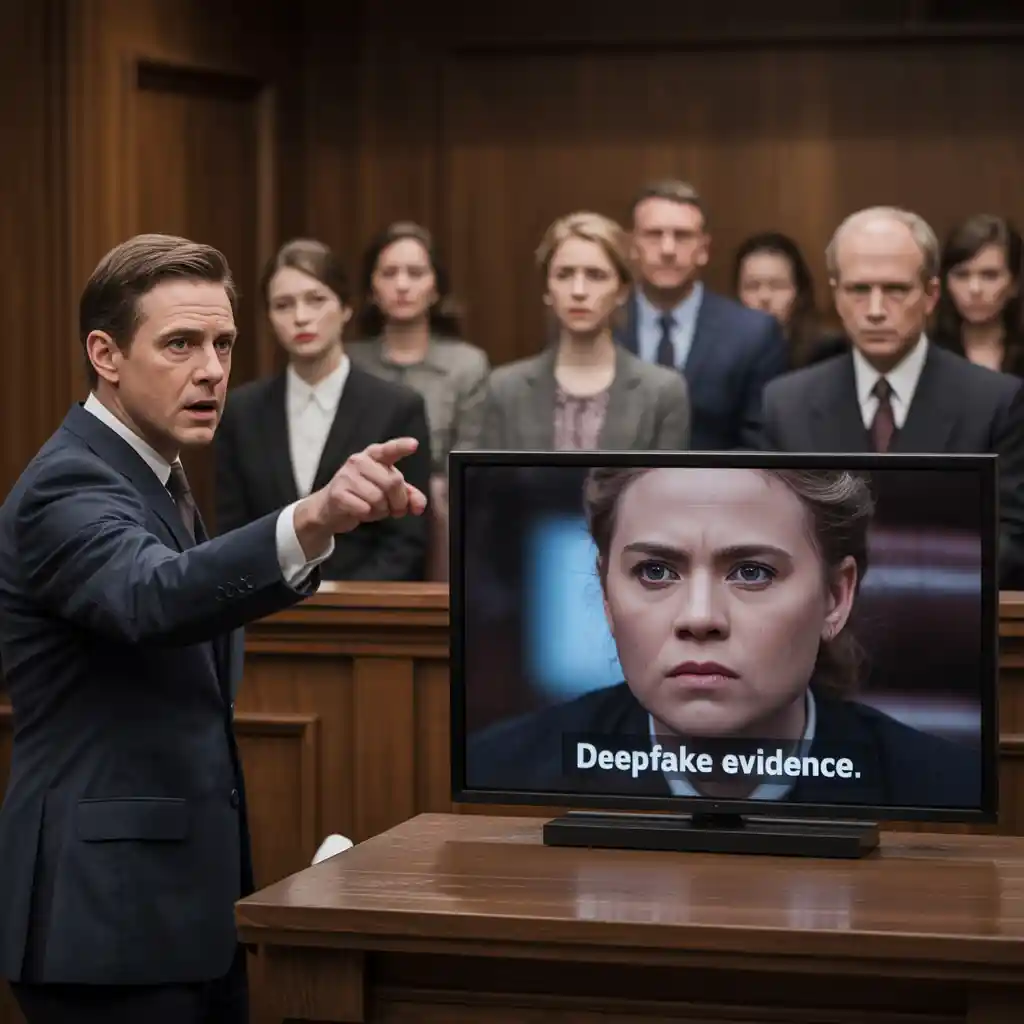In the age of artificial intelligence, few innovations have stirred as much debate and concern as deepfakes. These highly convincing, AI-generated videos or audio clips can fabricate people’s actions and speech with alarming accuracy. While this technology has entertainment and artistic applications, its misuse has opened a Pandora’s box of ethical, social, and legal problems. One of the most pressing concerns is the emergence of deepfakes in courtroom settings where truth is paramount, and the consequences of deception can be life-altering.
The Rise of Deepfakes: A Double-Edged Sword
Deepfakes use machine learning techniques, specifically a form of AI called generative adversarial networks (GANs), to create or alter content in a way that appears authentic. With just a few minutes of source video or audio, deepfake tools can generate highly realistic media where people seem to say or do things they never actually did.
While amusing on social media or in parody videos, these manipulated files pose significant risks when introduced into legal environments. In deepfake court cases, even the possibility of forged evidence challenges the very foundations of legal proceedings, undermining confidence in visual and auditory testimony.
Deepfake Legality: Where Do We Draw the Line?
Deepfake legality is a murky area. Creating deepfakes isn’t inherently illegal; it often depends on how the media is used. Courts generally treat deepfakes the same way they would any forged or manipulated evidence if it’s used to deceive or defraud, it can result in criminal charges.
However, the problem is bigger than isolated misuse. Judges, juries, and attorneys are now confronted with the question of whether audio or video evidence is genuine. For centuries, courts have relied on eyewitnesses, surveillance footage, and recorded confessions. With deepfakes in courtroom, even these traditional pillars of evidence are now suspect.
Notable Deepfake Court Cases
Though the phenomenon is relatively new, there have already been a few alarming deepfake court cases and legal incidents. In one high-profile example, a CEO’s voice was cloned using AI, and a scammer used it to instruct an employee to wire hundreds of thousands of dollars. While the case wasn’t criminally tried as a deepfake offense, it showcased how the technology can deceive even trained professionals.
In another case in Pennsylvania, a woman allegedly used deepfake technology to fake videos and audio of rival cheerleaders behaving inappropriately, trying to get them kicked off the team. The evidence, though poorly made, almost led to real-world consequences before being exposed as fabricated.
These incidents highlight the growing need for better standards and tools to detect fake content, especially when such media might be used in trials.
Deepfake Laws: Still Catching Up
As deepfake technology races ahead, the legal system is scrambling to keep up. Deepfake laws are still evolving, with different jurisdictions taking varied approaches. In the U.S., states like California and Texas have passed legislation criminalizing certain malicious uses of deepfakes—particularly around elections, impersonation, and non-consensual adult content.
But these laws often focus on specific uses rather than addressing deepfakes as a broader issue in the courtroom. There is no comprehensive federal law that directly tackles deepfakes in legal evidence or trials. This creates a patchwork of regulations that can complicate prosecuting deepfakes, especially when they cross state lines or international borders.
The Need for Deepfake Regulation in Legal Systems
To maintain the integrity of the justice system, deepfake regulation needs to extend into legal standards and courtroom practices. One potential solution is to require digital authentication for any media submitted as evidence. Courts might also rely more heavily on forensic analysts trained to detect deepfakes using software tools that analyze video inconsistencies, metadata, and AI “fingerprints.”
Another avenue is the development of chain-of-custody protocols for digital files. Just as physical evidence is tracked and documented, digital files may need similar treatment to prevent tampering or replacement with fake versions.
Furthermore, attorneys and judges must be trained in the risks and realities of AI-generated media. Legal professionals need to understand not only how deepfakes are created but also how to challenge them in court effectively.
Prosecuting Deepfakes: A Legal Minefield
Prosecuting deepfakes poses unique challenges. It’s not enough to prove a piece of media is fake—you must also prove who made it, that it was used with intent to deceive, and that harm occurred as a result. The anonymous nature of internet platforms and the global availability of deepfake tools make it hard to trace perpetrators.
This complexity makes it difficult for prosecutors to bring cases, especially when traditional laws like fraud or defamation may not directly apply. Moreover, the novelty of the technology can make judges and juries skeptical or confused, complicating efforts to deliver justice.
The Road Ahead: Balancing Innovation and Integrity
The presence of deepfakes in courtroom scenarios is no longer hypothetical. As AI-generated content becomes more realistic and accessible, the potential for misuse in legal contexts grows. While technology itself is neutral, its weaponization against the justice system demands urgent and thoughtful intervention.
Stronger deepfake laws, better digital forensics tools, and robust deepfake regulation can help safeguard the courtroom from manipulated evidence. At the same time, legal professionals must be proactive in adapting their practices to meet the challenges of this new reality.
As we enter an era where seeing is no longer believing, truth in the courtroom can no longer rest solely on what’s visible or audible. It must be verified, scrutinized, and sometimes even questioned—because in the age of deepfakes, justice depends on it.
Keep an eye for more latest news & updates on Hoseasons!

